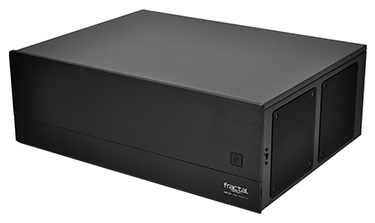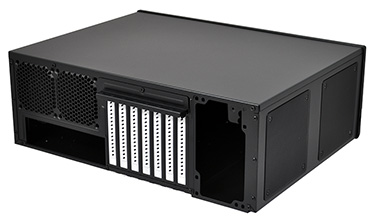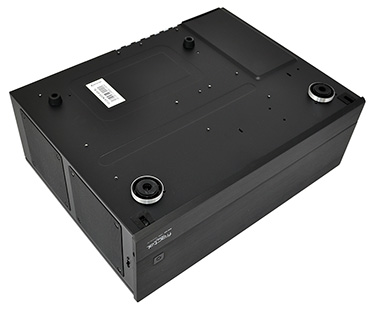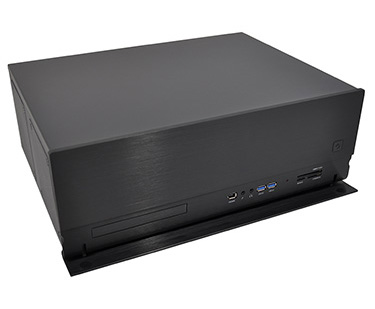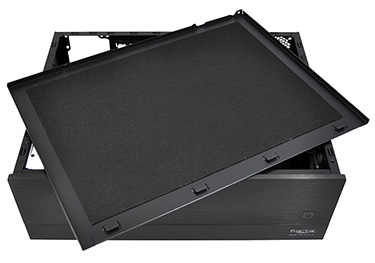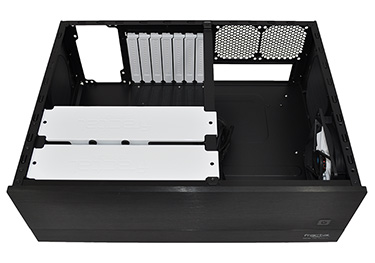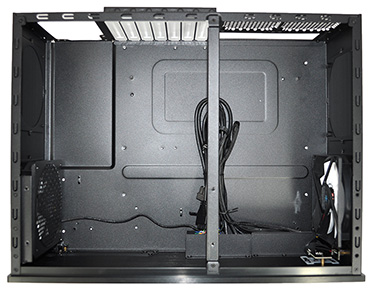Introduction
As much as we liked the idea, we're beginning to accept the fact that home-theatre PCs will never be more than a hobby for a niche set of consumers. And, seeing as Microsoft now favours the Xbox as the centre of the living room - at the expense of the once-promising Windows Media Center - HTPCs are going to remain a niche solution for the foreseeable future.
They're still a lot of fun to build, though, and Fractal Design is hoping that there's enough interest to warrant releasing a couple of HTPC-specific chassis; the compact Node 304, priced at £80, and the more spacious Node 605, priced at £115.
The Swedish manufacturer has a reputation for producing simple, sleek-looking enclosures that keep quiet during use, and it should be able to use that expertise to create a chassis that fits neatly into living-room surroundings. We've got the larger, more expensive Node 605 in for our review, and the initial out-the-box impressions are good.
Designed to look at home with the rest of your audio/visual equipment, the 445mm x 164mm x 349mm frame is a little tall but not too deep. Your A/V rack will need well-spaced shelves to fit it in, but depth shouldn't be a problem. And once it's in place, the Node 605 does look the part; Fractal's black paintwork is good, there's minimal disruption to a clean, clutter-free design, and the 8mm-thick aluminium front face is very attractive.
There isn't a great deal going on around the chassis' exterior panels - it's suitably minimalist, as every HTPC enclosure ought to be - and Fractal's build quality is solid. Four rubber feet help prop it up, and a flip-down panel reveals a selection of front I/O ports. The cover can be pulled open easily from either side, revealing a slim optical-drive bay; FireWire; audio and microphone jacks; two USB 3.0 ports; a small HDD LED indicator and an integrated multi-card reader.
The power button is always accessible on the right side of the chassis' front face, and it provides a satisfactory click when pressed. Our only gripe in terms of exterior design is the blue LED that surrounds the power button. It isn't overly bright, but if you like your home theatre to be as dark as possible, it may prove to be an unwanted distraction. What you will appreciate, though, is the integrated three-step fan controller whose basic switch is positioned around the side from the power button; it's easy to reach and, as we'll demonstrate later in the review, does a good job of balancing airflow and noise.
Worth noting, also, that Fractal originally intended on having a big company logo stamped up front and centre. We encouraged the company's reps to make the logo more subtle, and we're happy to see the Fractal branding stylishly placed in the bottom-right corner.
HTPC chassis sound particularly fancy, but look past the acronym and what you really have is a horizontal desktop chassis tarted up to be far sleeker in appearance and quieter during use. Fractal's given the Node 605 a decent amount of glitzy appeal, and it tackles soundproofing through a top panel lined with noise-dampening material and two dust-filtered 120mm 'Silent Series' fans equipped with hydraulic bearings.
The fans are positioned on either side of the chassis to pull in cool air, though Fractal's instruction manual recommends that users with "components that produce excessive heat" install an optional exhaust fan on the one spare 120mm mount. For particularly extreme builds, a further two 80mm fan mounts are also available at the rear of the chassis.
Removing the chassis' noise-dampened lid unearths two sizeable chunks of white metal, mounted from the left side of the steel frame to the removable central support pillar. These contraptions are Fractal's dedicated hard-disk mounts, with each supporting two 2.5/3.5in disks.
Four storage bays and an optical drive is good going for a sleek-looking HTPC, but the Node 605 does have limitations and, depending on your choice of components, you may or may not be able to utilise the chassis' complete feature set. The key provisos are as follows: the optical bay only supports slimline drives, and even then, it can only be used if you're installing a micro-ATX motherboard. Opt for a standard ATX board and the optical drive mount is obstructed and rendered unusable.
Similarly, the hard-disk mounts will only fit in if your other components aren't too big. Our test platform consists of a large power supply and two Radeon HD 7950 graphics cards, and in this configuration, there's not enough room to get either of the two hard-disk mounts back into place. Our graphics cards are unusually long for a build of this sort, but it demonstrates a worst-case scenario. As a general rule of thumb, graphics cards measuring up to 180mm in length will fit in alongside both hard-disk mounts, and cards measuring up to 255mm in length can be used with a single hard-disk mount.
Of course, there are always going to be trade-offs with an HTPC enclosure, but the Node 605's biggest hurdle may be the £115 price tag. We'd really like to see pricing dip below the £100 mark, but the Node 605 is nonetheless showing some good potential. Our high-end Z77 platform is more than powerful enough to play the latest games, yet it fits in to Node 605 easily enough and it's precisely the kind of rig we'd want hooked up to a big-screen TV in our living room. Question is, can Fractal's HTPC chassis keep these high-end components from getting too hot under the collar?






